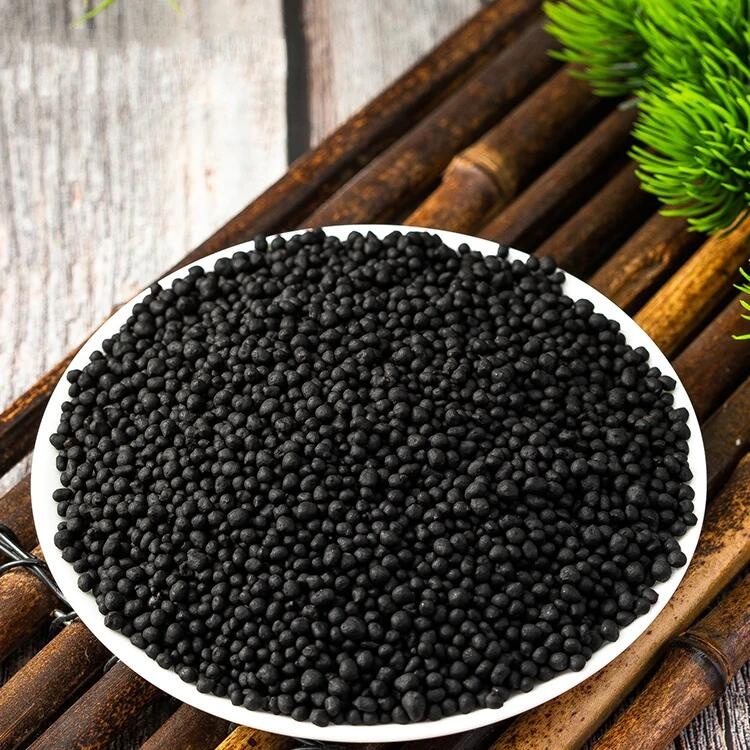The main functions of humic acid are to improve soil, promote growth, stimulate rooting, release fixed macro and micro elements in the soil through chelation, and resist stress (high temperature, drought, soil salinization, etc.)

There are many products about humic acid on the market. How to choose is crucial:
First, look at the source: the main sources of humic acid are mineral potassium humate and biochemical humic acid. Mineral humic acid is extracted from coal. After hundreds or thousands of years of chemical reactions, mineral humic acid contains a large number of functional groups, which can adjust acidity and alkali to reduce soil salinity. Biochemical humic acid is fermented from substances such as sugarcane straw and has a simple molecular structure. The price is much lower than that of mineral sources.
Second, look at the content. The content of the same mineral humic acid may be different. Everyone may know that there are three main types of humic acid: black humic acid, brown humic acid, and yellow humic acid. Black brown humic acid has a larger molecular weight and is mainly effective for soil improvement. Yellow humic acid is further extracted from black brown humic acid, has a smaller molecular weight, and focuses more on stimulating crops (such as stimulating rooting, crop resistance, etc.).
① Crude extraction: Many relatively cheap humic acids on the market are crude extraction products. Such products have a high content of humic acid, but most of them are mainly black humic acid and brown humic acid. The price of such crude extraction products may be relatively cheap, but if they are used for rooting or solving some problems in the critical period of crops, the effect may not be very good. It is still okay to use them as soil conditioners. ② Pure fulvic acid: There are also many products that are pure potassium fulvic acid. Most of these products are biochemical fulvic acid, which is used as foliar fertilizer. Biochemical fulvic acid and mineral fulvic acid are easy to distinguish. Generally, biochemical ones will smell sweet and brown sugar. Mineral humic acid is generally odorless. ③ Ratio of brown-black humic acid to humic acid: Taking Tanbeijia No. 2 as an example, Tanbeijia No. 2 is 35% humic acid and 20% brown-black humic acid. This ratio enables Tanbeijia No. 2 to improve the rhizosphere environment (soil external factors) and enhance root performance (crop internal factors). After years of application, it has a good effect. The ratio of brown-black humic acid to mineral humic acid is different after the products of different manufacturers come out. As long as everyone understands that brown-black humic acid is mainly for soil improvement, mineral humic acid is mainly for stimulating crops. Generally speaking, the price of brown-black humic acid with a higher content may be more favorable, but the solubility may be worse when applied.
Finally, let’s look at the other properties of the product. Humic acid will react with calcium and magnesium ions. Now the water quality in some economic crop areas across the country is getting worse and worse, so many products will encounter hard water reactions. Carbon Beijia No. 2 has added some synergistic substances from the company’s second plate plant extracts and has been treated with anti-flocculation. The product has a good ability to resist hard water and can currently adapt to water quality across the country. If it is not treated, flocculation and drip irrigation may occur in hard water.

What problems can humic acid fertilizer solve:
1. Soil salinization and secondary salinization rooting problems. Generally, the soil in greenhouses planted for many years has high salinity and soil acidification problems are more prominent. The use of humic acid for rooting treatment is better than using amino acids and alginate rooting products.
2. The problem of crop leaf yellowing caused by root system obstacles mainly has two aspects: ① The alkaline soil in the northern region causes the leaves of crops to show iron deficiency yellowing during the seedling stage or the period of fruit tree sprouting. Generally, the use of Carbon Beijia No. 2 + iron and zinc trace elements has a better effect. ② In the southern region, the lower leaves of fruit trees turn yellow due to magnesium deficiency in the late stage of crop growth. Using Carbon Beijia 2 root treatment + calcium and magnesium foliar fertilizer treatment two or three times has a good effect.
3. Use humic acid during the critical nutrient period. Attention should be paid to the maintenance of the root system during the critical period of crop growth. For example, many problems such as slow expansion and slow color change of grapes are related to the poor root system of crops. Therefore, it can be used during the critical period of crop germination, sprouting, and expansion if there are root problems and soil salinity problems.



